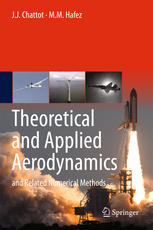

Most ebook files are in PDF format, so you can easily read them using various software such as Foxit Reader or directly on the Google Chrome browser.
Some ebook files are released by publishers in other formats such as .awz, .mobi, .epub, .fb2, etc. You may need to install specific software to read these formats on mobile/PC, such as Calibre.
Please read the tutorial at this link: https://ebookbell.com/faq
We offer FREE conversion to the popular formats you request; however, this may take some time. Therefore, right after payment, please email us, and we will try to provide the service as quickly as possible.
For some exceptional file formats or broken links (if any), please refrain from opening any disputes. Instead, email us first, and we will try to assist within a maximum of 6 hours.
EbookBell Team

5.0
90 reviewsThis book covers classical and modern aerodynamics, theories and related numerical methods, for senior and first-year graduate engineering students, including:
-The classical potential (incompressible) flow theories for low speed aerodynamics of thin airfoils and high and low aspect ratio wings.
- The linearized theories for compressible subsonic and supersonic aerodynamics.
- The nonlinear transonic small disturbance potential flow theory, including supercritical wing sections, the extended transonic area rule with lift effect, transonic lifting line and swept or oblique wings to minimize wave drag. Unsteady flow is also briefly discussed. Numerical simulations based on relaxation mixed-finite difference methods are presented and explained.
- Boundary layer theory for all Mach number regimes and viscous/inviscid interaction procedures used in practical aerodynamics calculations.
There are also four chapters covering special topics, including wind turbines and propellers, airplane design, flow analogies and hypersonic (rotational) flows.
A unique feature of the book is its ten self-tests and their solutions as well as an appendix on special techniques of functions of complex variables, method of characteristics and conservation laws and shock waves. The book is the culmination of two courses taught every year by the two authors for the last two decades to seniors and first-year graduate students of aerospace engineering at UC Davis.